Surely you have heard of the so-called edge mowing function that some robotic mowers have. But can it really mow any edge with it? And what exactly is the edge mowing function? Here I will explain to you exactly what it is and what this function is suitable for.
What is the edge mowing function of a robotic mower useful for? The edge mowing function of some robotic mowers causes the mower to circle once completely around the lawn and mow the edge. Due to the special design of the mowing unit, it comes closer to the edge. However, even mowing robots with edge mowing function cannot mow completely to the edge.
Even with the edge mowing function you can’t expect miracles. There is always a certain minimum distance between the blades of the mower and the outer edge. But why is that? And what is the edge mowing function good for anyway? And are there any disadvantages to using the edge mowing function? I will clarify this in the coming sections.
Contents
How does the edge mowing function work?
The edge mowing function is a special function where your robotic mower, starting from the charging station, travels once counterclockwise around your entire lawn on the boundary wire to mow the grass that is still left at the edge, which it cannot properly catch in normal mowing mode.
The mowing unit of robotic mowers with edge mowing function is not exactly in the middle under the mowing robot, but is slightly offset towards the right side (or towards the left side in the case of models that mow the edge clockwise).
As a result, the distance on the right-hand side between the body and the mowing unit is smaller, which enables the robot to mow closer to the edge. The resulting smaller safety distance between the mowing unit and the bodywork is compensated for by the fact that on the right-hand side an additional kind of grating encloses the mowing unit so that objects and feet cannot get into the mowing unit.
In the following graphic you can see again how the offset mower unit brings the robotic mower closer to the edge and how it drives over the boundary wire.
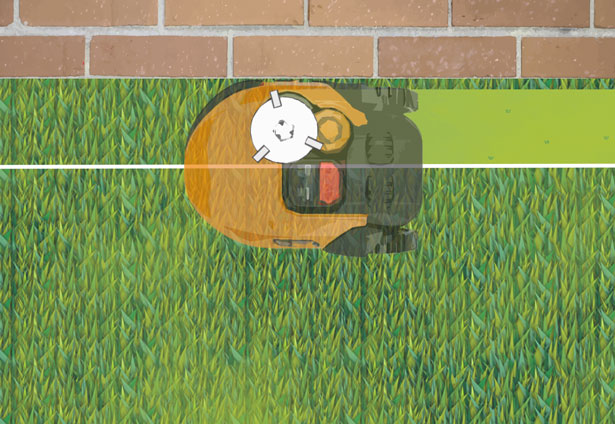
With WORX models, the robotic mower carries out a lawn edge cut every day as a standard. This setting can only be changed with the corresponding app. There you can tap on each day under “Schedule” and thus switch the edge cut on or off on that day. An orange highlighted day means that the function is switched on that day.
In the following video it is relatively well explained at the beginning:
Can a robotic mower with the edge mowing function mow completely up to the edge?
Even with the edge mowing function, the robotic mower unfortunately cannot mow all the way to the edge if the edge is not correctly constructed. How the edge must be for this to happen, I will explain in a moment.
Even on robotic mowers with the edge mowing function, a thin edge remains on the outside, because there is still a small distance between the mowing unit and the outer shell of the robot, as you can also see on the graphic.
If the lawn reaches right up to a solid obstacle, even a mowing robot in edge mowing mode will not reach the very edge. If, on the other hand, there is a certain amount of clearance that the mowing robot can drive over, it can also mow right up to the edge.
Such a space could be, for example, an adjacent flower bed covered with bark mulch where the flowers do not reach the very edge, or a paved path. Above all, however, lawn edging stones are often used for such borders at the edge.
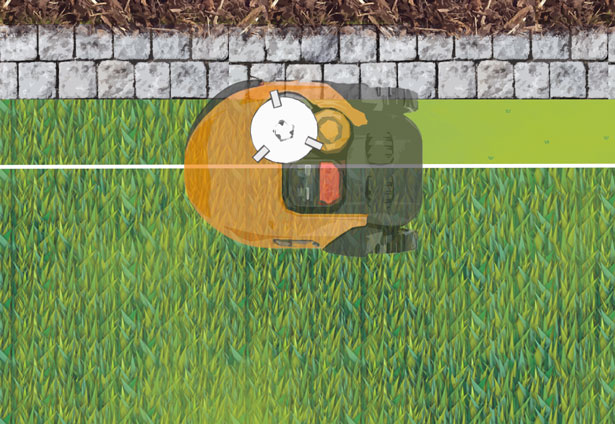
At least in places where the lawn is border ed directly by a solid obstacle, you must therefore always lay lawn edging stones or something similar. Here is an example of what this can look like:
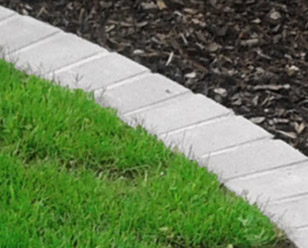
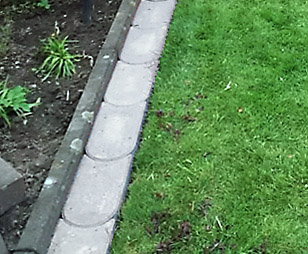
In this article you will learn everything about how wide the lawn edging stones should be for the different models of robotic mowers and what distances to the edge you should choose.
Also, I recently created an overview of different types of lawn edging stones that you can use to border your lawn.
What use is the edge mowing function?
So if roboti mowers cannot mow all the way to the edge even with the edge mowing function, what use is it?
With the edge mowing function, robotic mowers still get much closer to the edge than they would without this function. This means that if you lay lawn edging stones, you can also use narrower stones here.
In some places you can even do without lawn edging stones, where, if you used a model without the edge mowing function, you would probably have to lay them.
In addition, a robotic mower with the lawn edge function can also mow the edge very well in sharp corners and angles, where other mowing robots may have problems.
It is important to be aware that the mower will not reach the very edge if the lawn is directly adjacent to a wall or fence, for example.
Does the edge mowing function also have disadvantages?
There is a problem that can arise at least in some gardens. The mowing robot always follows a precisely defined route when mowing along edges. It always runs exactly in the middle of the boundary wire.
Over time, this can result in tracks or a rut being created, as the lawn is always flattened in the same place, whereas mowing robots that drive in random mode always drive onto the lawn at different places and from different directions.
This is a problem especially in particularly steep places, or if the ground is frequently wet. In these scenarios, the wheels of the mowing robot often spin excessively at these places, which leaves a clear track after some time.
Addition 16.07.20: Some of the more recent models alter their path a little bit with every round of cutting the edge, so that they do not always run through the same tracks, thus putting less stress on the same spot of grass.
Not a real disadvantage, but a problem worth mentioning: The edge mowing function only works on the outer boundary wire. If you have created islands on your lawn with the boundary wire, for example around an island of flowers, the robotic mower cannot perform the edge mowing mode there because it cannot reach the island via the wire (the connection between island and boundary wire is invisible to it).
Alternatively, however, you can create a “pseudo-island” which the mowing robot does not recognize as a real island and which is practically only a kind of peninsula. Here you can read all about islands and pseudo-islands for robotic mowers with boundary wire.
Does a robotic mower with the edge mowing function make sense for your garden?
The advantage of mowing straight up to the edge of your lawn can only be enjoyed if there are many places in your garden where the lawn is bordered by another level surface, so that the mowing robot can drive slightly over the edge of the boundary in order to cut right up to the ends of the lawn.
On the other hand, if most of your lawn borders directly on solid obstacles such as a fence or wall, a thin strip of lawn will remain, even if it is quite narrow. This means that you will still have to mow the edges again if that bothers you, which is exactly what you want to avoid with the edge mowing function.
However, this strip is really very thin, so you may as well just ignore it if it doesn’t bother you.
If you are thinking about surrounding the entire lawn with lawn edging stones, you do not necessarily have to choose a robotic mower with the edge mowing function, because in this case you can simply use stones that are a little bit wider, so that any other model of mowing robot can also mow to the edge.
When choosing lawn edging stones, it also makes sense to think about the future. Perhaps thinner stones will suffice first, because you choose a mowing robot with edge mowing function. At some point in the future, however, you may want to buy another mowing robot that does not have this function, which is why you will need wider stones. In this case it might be useful to lay somewhat wider stones directly. The difference will not be very big.
Which robotic mowers have the edge mowing function?
So far I only know models from WORX and ROBOMOW. With WORX the function is called “edge mowing function,” with ROBOMOW it is called “edge mode.” I will soon create a comprehensive overview of robotic mowers with the edge mowing function.
Related questions
How much grass do robotic mowers leave on the edge? Mowing robots can leave up to 14 inches of grass at the edge. How much grass is left standing depends to a certain extent on the model, but mainly on the nature of the lawn edge. Lawn edging stones can almost always solve the problem of the remaining grassy strip at the edge.
Learn more: This much grass is left on the edge of the lawn by mowing robots
How wide should lawn edging stones for robotic mowers be? Lawn edging stones should be between 4 and 9.5 inches wide. The exact width is determined above all by the nature of the outer edge of the lawn, whether it is a wall or a flower bed, for example, as well as the robotic mowing model used.Learn more: This is how wide lawn edging stones for robotic mowers should be
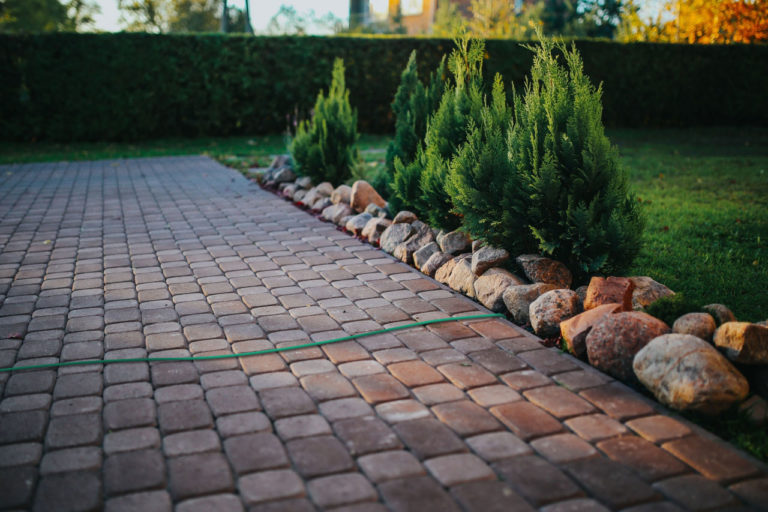
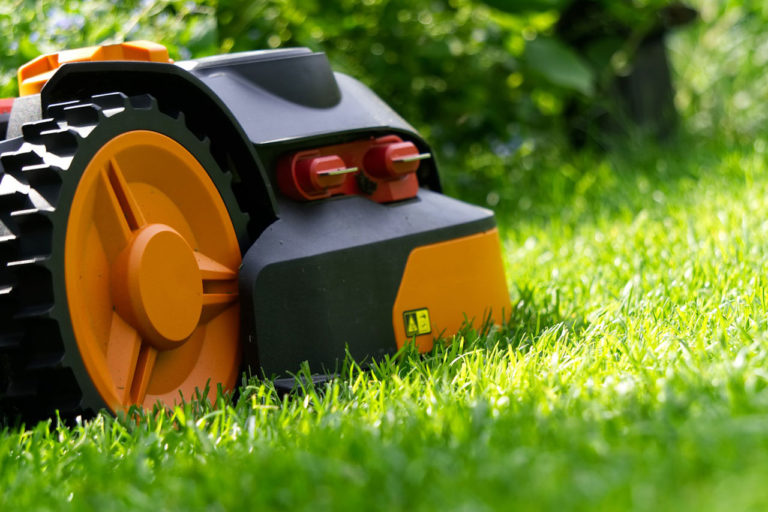
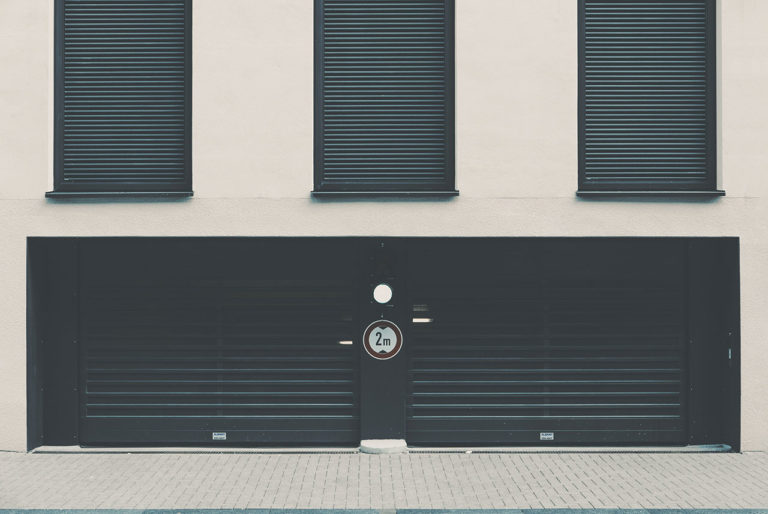
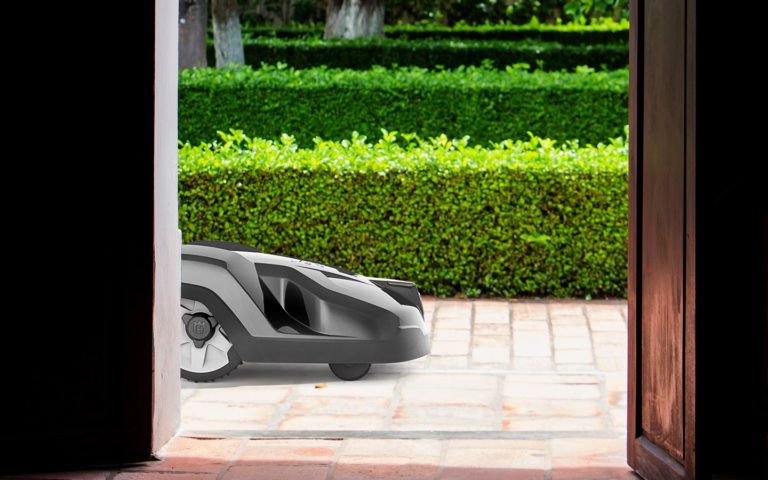

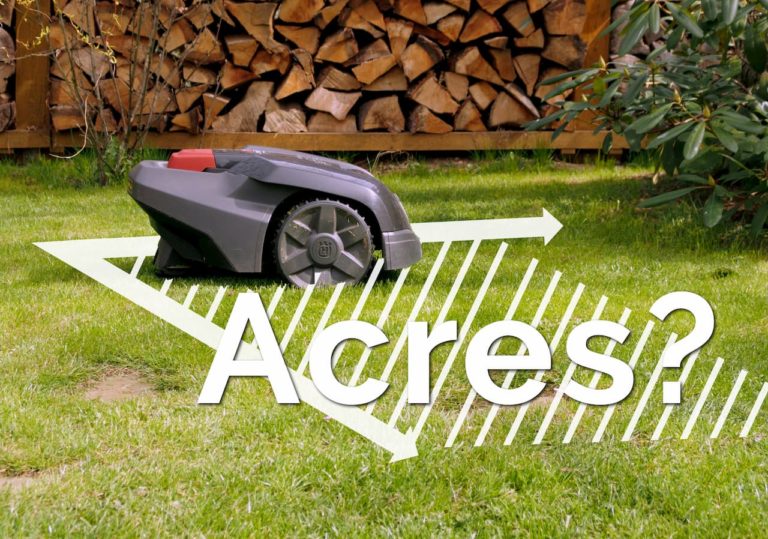
Hi,
Wonder if you can comment, please
I have a Yardforce SA 650 Eco which starts it cycle by reversing from the docking station before turning through 180 degrees to start its mowing cycle.
The mower starts to turn before it is clear of the station and some minor damage has occurred to the station. The station is level.
Yardforce are unable to advise if the early start of turning is a normal feature.
Have you any thoughts please?
Thank you